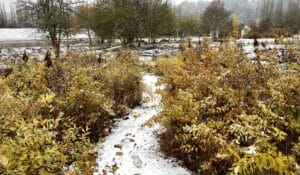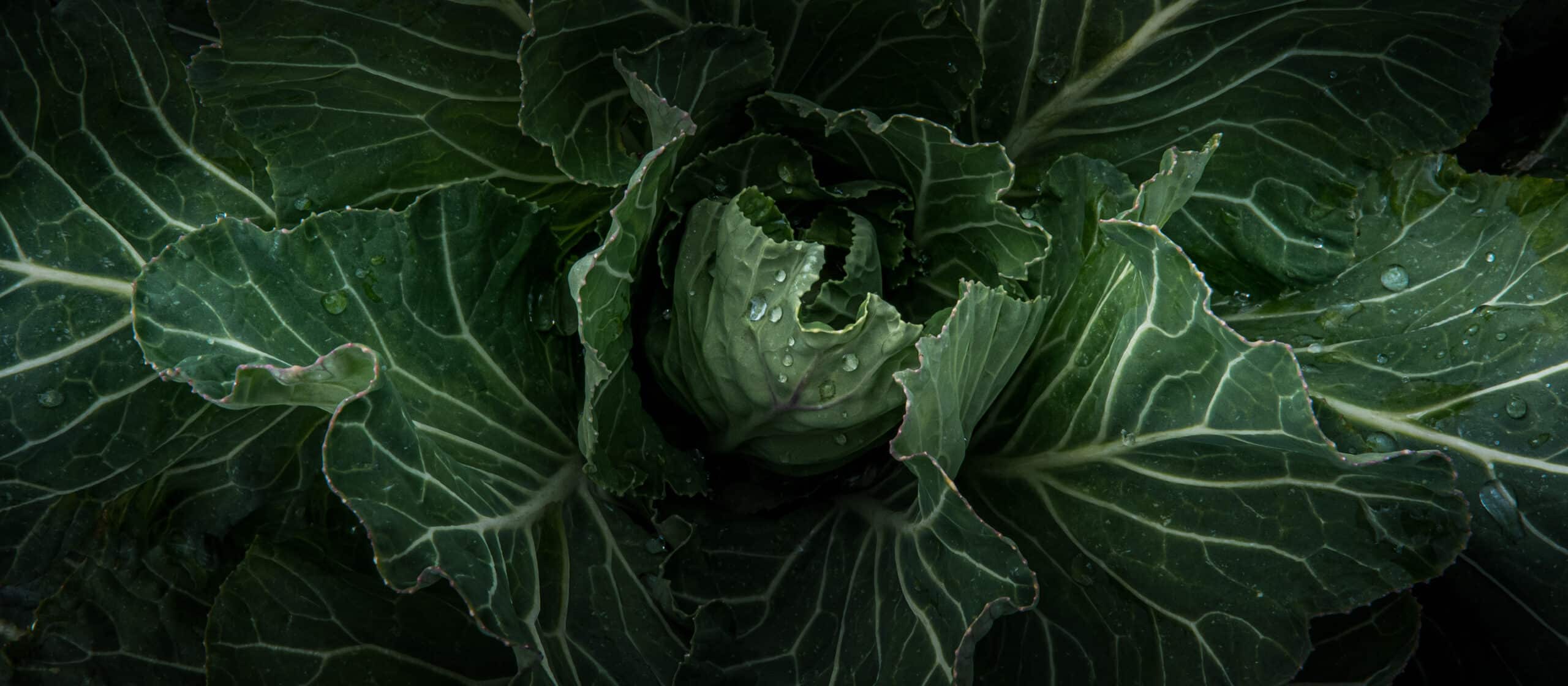
Wetland conservation could help meet Biden’s 30×30 goals while sequestering carbon
Wetland conservation could help meet Biden’s 30×30 goals while sequestering carbon
- posted on: April 29, 2021
- posted by: Rebecca Jordan
"*" indicates required fields

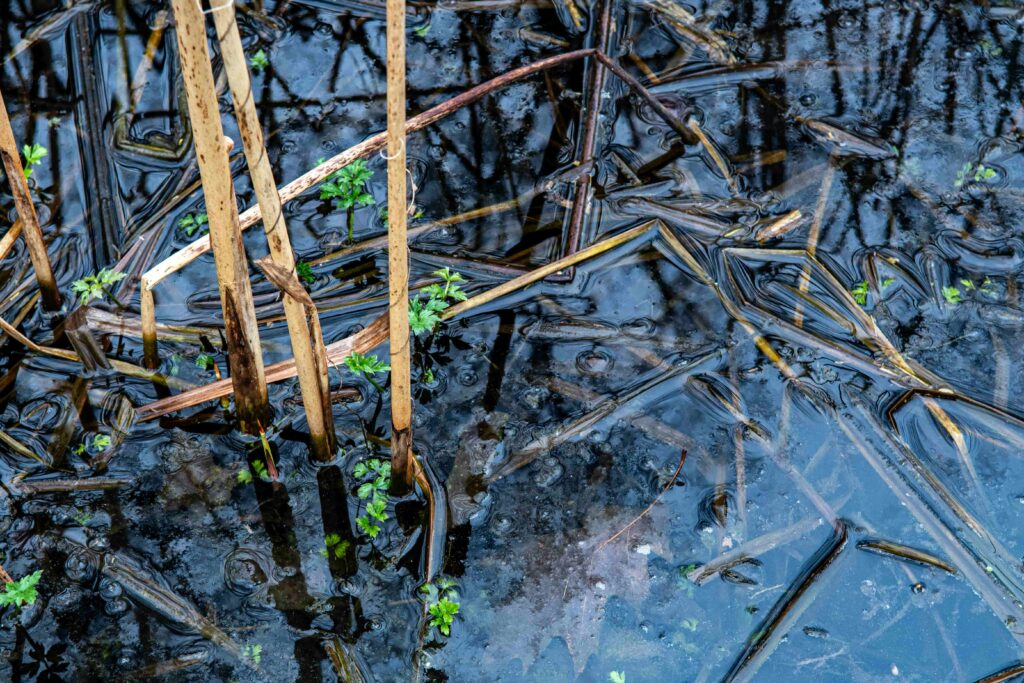
Recent wet winter weather in the Pacific Northwest means local wetlands are given the opportunity to thrive—and to help with very human problems like climate change.
On January 27, President Biden signed the “30×30” executive order, setting a goal to conserve 30% of America’s lands and 30% of waterways by 2030.
The campaign lists three reasons for this nationwide conservation effort: protecting biodiversity, slowing extinction rates, and helping leverage natural climate solutions.
Meeting the 30 by 30 target will require improving conservation on land that’s now in private hands. Around 70 percent of land in the U.S. is owned by individuals or companies.
Though we haven’t yet seen how the new administration plans to manage this ambitious goal, one thing is for certain: America’s wetlands have a major role to play in climate solutions.
Carbon sequestration in action at the 21 Acres wetlands.
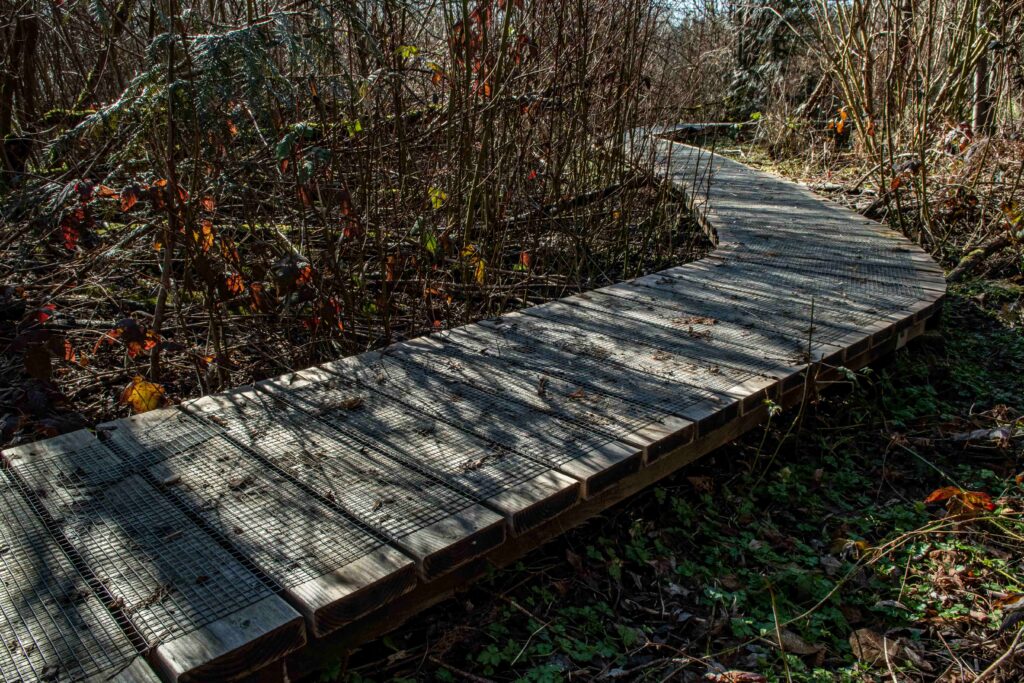
Coastal wetlands are listed by Project Drawdown as a vital way to sequester carbon. At 21 Acres Center for Local Food & Sustainable Living in Woodinville, Washington, 5.7 acres of wetland are being restored alongside agricultural land. These wetlands were part of a mitigation in King County, helping to offset impacts from the building on agricultural properties.
Forest preservation is getting a lot of attention lately as an important part of mitigating climate change. But wetlands—particularly the coastal wetlands of the Puget Sound—have the opportunity to sequester even more carbon than terrestrial forests.
“Carbon is the building block of life,” said Jess Chandler, Restoration Lead at 21 Acres. “Excess carbon contributes to global heating, but plants love it. When we provide healthy habitat for native plants, they sequester this carbon, keeping it from going into the atmosphere and proactively closing the loop on carbon emissions.”
Restoration is an agroecological farm practice.
Agroecology is a practice, science, and social movement that many farmers use to understand their farmland, produce productive crops and soil, and take human ecologies into consideration. “Agroecology is a movement to put the power back in the hands of the community members growing and eating the food. Agroecology rejects an industrialized model that is socially, economically, and environmentally degenerative,” said Anthony Reyes, Farm Operations Lead at 21 Acres. By focusing on soil health at 21 Acres, the team creates a perfect byproduct—delicious and nutritious food for and with the community.
When the average American thinks of farms, we might think of rows and rows of all the same crop—monocropping—that use every available inch of land in order to produce high yields—often without thoughts for impacts on the environment or on people. This monocropping can actually be much less resilient to climate change, meaning that plants can succumb to pests and adverse weather conditions more easily.
A diversified farm is a productive alternative to monocropping. Not only can practices such as crop rotation and polyculture be good for the soil and give high yields, but non-production natural spaces can help support healthy agriculture. Here in the Pacific Northwest, that means wetlands.
21 Acres and the surrounding Sammamish Valley APD (Agricultural Production District) is on Duwamish and Coast Salish lands and is a historic wetland. “Our wetlands are an intentional farming practice,” said Chandler. “They provide ecosystem services, which are good for our food production.”
Can ecosystem services save us from climate change?
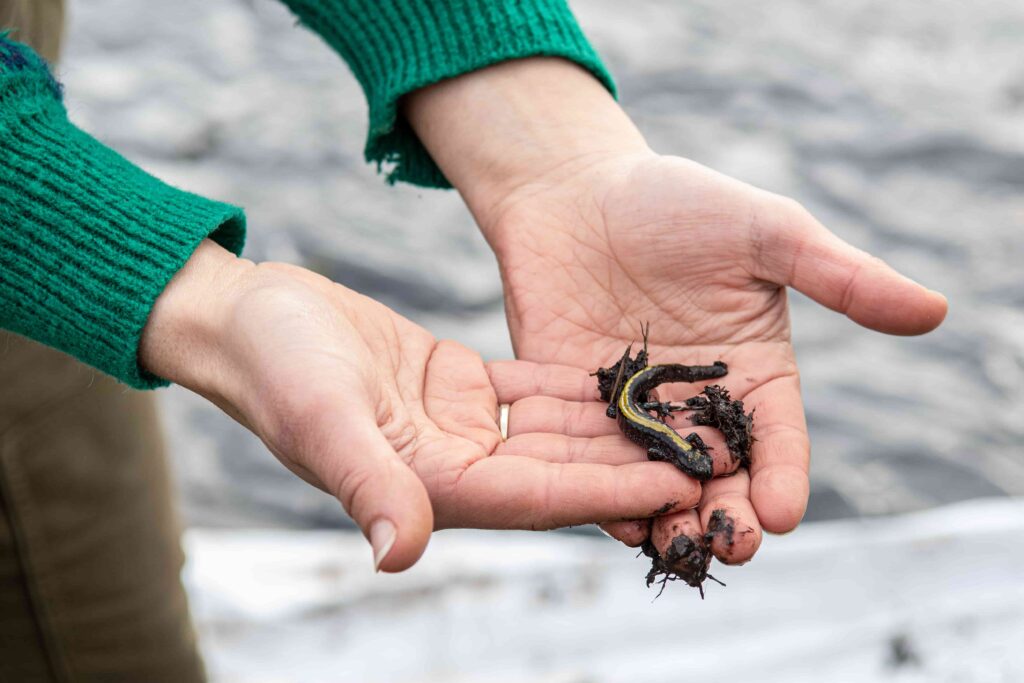
Wetlands aren’t only drawing down carbon—they’re also providing essential ecosystem services that support healthy environments and farmland. “Wetlands are crucial to mitigating climate change,” said Chandler. “Wetlands help support beneficial insects, plant biodiversity, carbon drawdown, and control seasonal farm flooding. At 21 Acres, our farming practices would look very different without maintaining these ecosystems.”
These ecosystem services, though, are in danger of being lost if wetlands are not preserved and carefully managed. For example, reed canary grass is an invasive species familiar to Washington locals that thrives in our wet climate. Farmers battle this grass across the state.
Last year, Chandler, Masra Clamoungou (a local pork farmer), and volunteers from partnering organizations employed multiple different techniques to reduce the reed canary grass that was in danger of encroaching on production fields. That included tending pasture-raised pigs to live willow staking.
“Native willows are hardy, grow quickly, and will shade out sun-loving reed canary grass,” said Chandler. “Our hope is in a few years, this patch of reed canary grass will be a thriving wetland complete with willow trees and many native species on all trophic levels.” This vision would mean better water management for the farm, likely less flooding, and perhaps even reduced need for irrigation.
Mushrooms are another example of ecosystem services and a beloved pastime for many. Here in the Pacific Northwest, avid mushroom hunters protect the well-kept secrets of their favorite mushroom locations. One thing’s sure: mushrooms are not only a culinary treasure, but they also are essential to break down decomposing matter.
“As decomposers, fungi break down decaying plant and animal matter and recycle the nutrients back into the ecosystem,” said Angelica Lucchetto and Landon Harsch, two students studying environment and ecosystem services. “The metabolic processes of fungi do this naturally, as well as fix nitrogen for mutualistic symbiosis in the ecosystem.”
Restoration is responsible land stewardship.
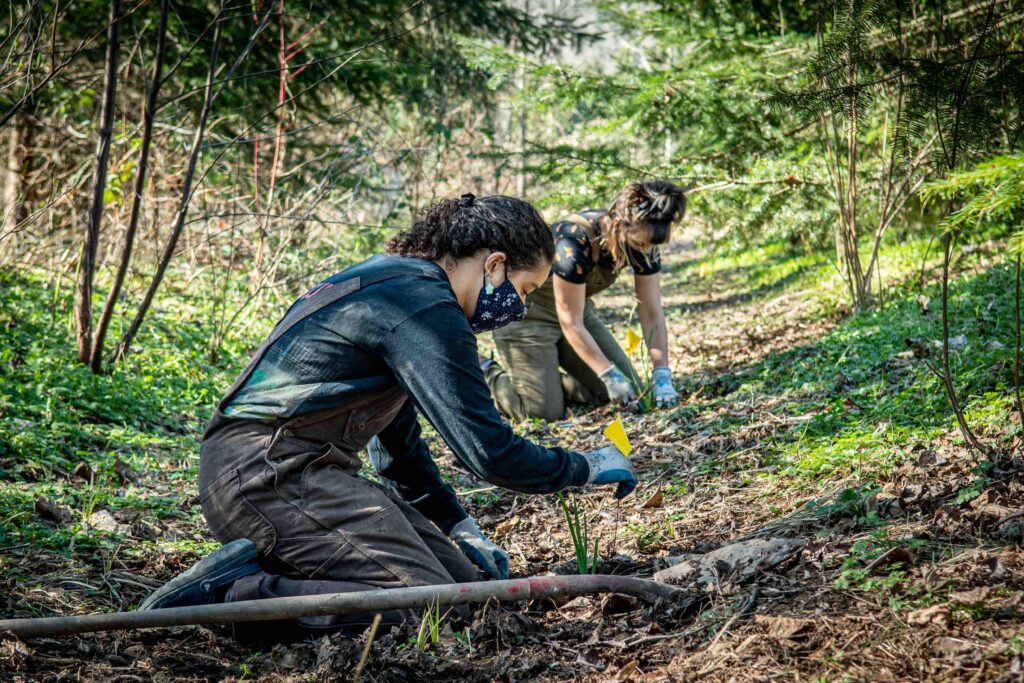
Utilizing nature’s natural systems is nothing new to small-scale farmers employing regenerative practices.
Many farms in the farming region acknowledge regenerative practices and agroecology as important ways to steward the land toward climate health and equity in food systems. “Wetlands are definitely a part of that,” said Chandler.
The 21 Acres wetlands are stewarded by the staff “soil team” (aka farm team) as well as hundreds of volunteers per year interested in gaining hands-on experience in land stewardship. “Once people learn by doing they often feel heavily invested in helping shape the landscape,” said Robin Crowder, 21 Acres Co-Director.
Hyperlocal land stewardship collaborations—like the 21 Acres wetland, local salmon restoration efforts such as Mid Sound Fisheries, and investment through groups such as the Woodinville Rotary Club provide a way for the community to have a say in how private and public land is kept. “It’s an important way for us to honor the fact that we’re restoring land that originally belonged to local tribes,” said Rebecca Jordan, 21 Acres Operations Manager. “What we decide to do with our land today will affect the surrounding communities and farmland for generations.”
Spread the word—wetlands are vital!
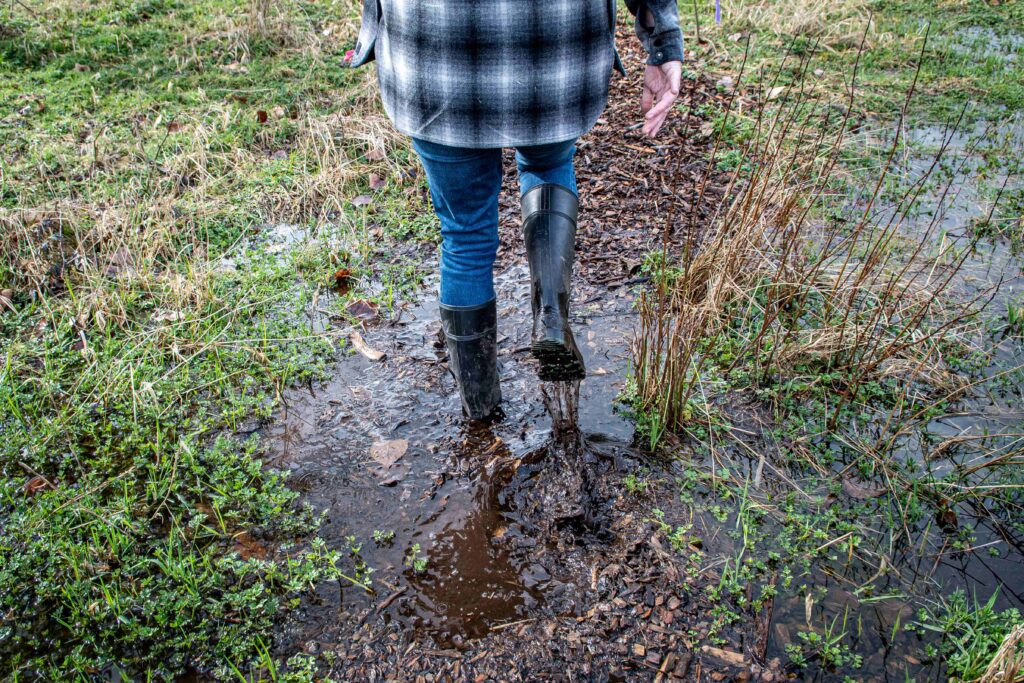
Wetlands are an important part of how 21 Acres stewards its agricultural property. This one-page resource document will help you share the ways that wetland restoration is important to us all on this planet. Learn more about getting involved in climate action.
About Rebecca Jordan
Becca Jordan is our Operations Manager at 21 Acres. Becca connects with visitors and keeps 21 Acres communications running smoothly. She has a variety of background experience, from science fiction writing and art to education, technical theatre, and costume design to horse care. She’s passionate about learning new things about the natural world and social and climate justice. In 2015 Becca participated in the Clarion Writer’s Workshop and graduated with an MFA from California Institute of the Arts in 2016. Becca originally hails from Escondido, California. Her favorite parts of the Pacific Northwest are the ancient trees and the plethora of life around every corner.










 back to blog overview
back to blog overview


